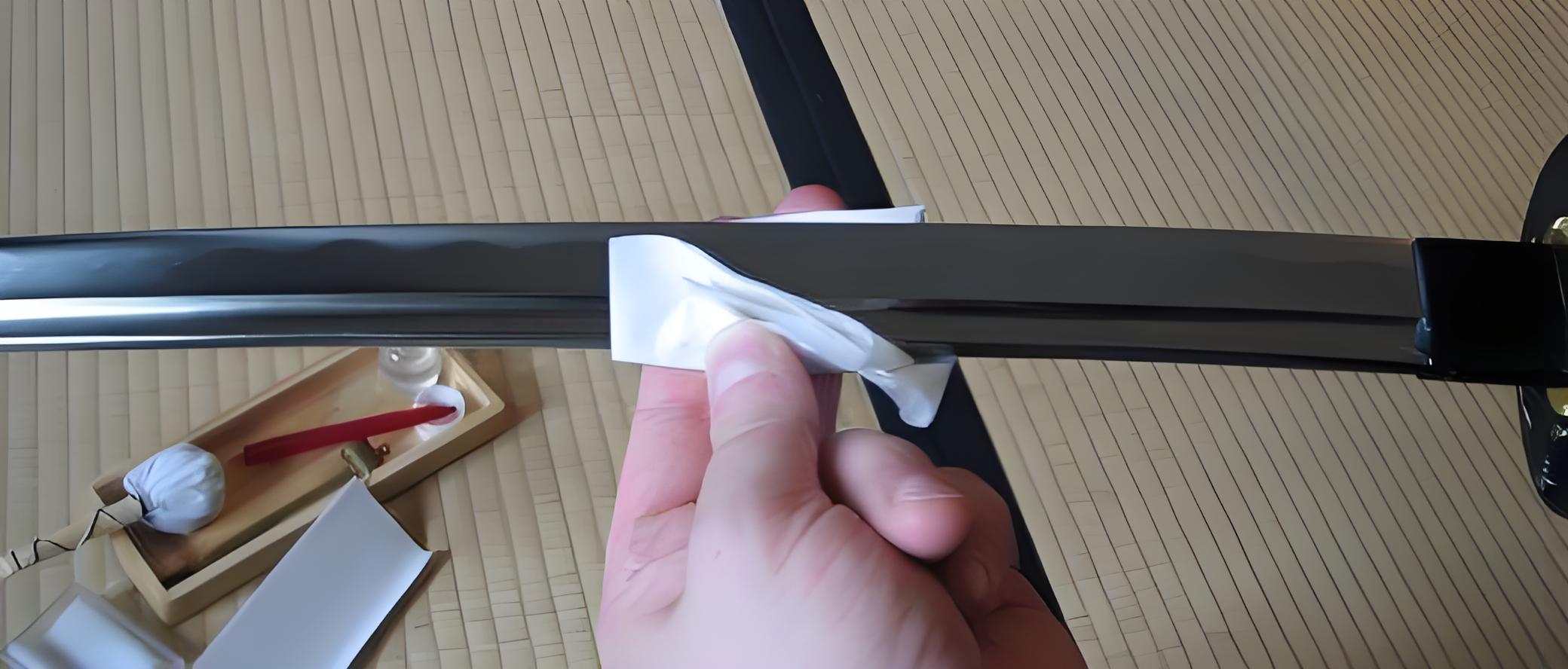How to Clean a Samurai Sword: Expert Guide to Japanese Sword Care

The samurai sword, as the iconic weapon of traditional Japanese warriors, carries a rich Japanese sword history and is a prized possession for many collectors and martial arts enthusiasts. Whether you own an authentic Japanese sword, a handmade samurai sword, or a modern functional samurai sword, proper cleaning and maintenance are essential. This article will walk you through the cleaning steps and precautions to help extend your sword’s lifespan while preserving its sharpness and beauty.
Why Clean and Maintain Your Samurai Sword?
Samurai swords are typically forged from high carbon steel or folded steel, which makes the blade sharp but also prone to rust. Especially for real samurai swords, exposure to moisture and oils from fingerprints can easily cause corrosion. Proper samurai sword care prevents rust, protects blade sharpness, and preserves the beautiful grain patterns on the blade.
Tools Needed for Cleaning Your Samurai Sword
-
Soft cloth or specialized sword cleaning cloth
-
Japanese sword oil (e.g., choji oil or mineral oil)
-
Uchiko powder ball (a traditional polishing powder)
-
Bamboo rod or specialized tools (for removing the handle)
-
Cotton swabs or fine brushes (for cleaning detailed parts)
Step-by-Step Cleaning Instructions
1. Remove the Handle (Tsuka)
For deep maintenance, it’s recommended to remove the tsuka (handle) first. The handle is usually secured by bamboo pegs (mekugi), so handle this carefully to avoid damaging any samurai sword parts or the blade itself. Removing the handle lets you inspect for rust or dirt, especially around the blade-handle joint.
2. Apply Uchiko Powder to the Blade
Uchiko powder is an indispensable tool for authentic Japanese sword care. Made from finely ground stone powder, it effectively absorbs oils and grime on the blade. Tap the Uchiko ball gently over the blade surface, then wipe the blade in one direction with a soft cloth to remove dirt and old oil.
3. Wipe the Blade
Use a clean, soft cloth (such as cotton or velvet) to carefully wipe the blade, making sure all Uchiko powder and residues are fully removed. Avoid rubbing back and forth to prevent dulling the sharp edge or damaging the steel structure. This step is crucial to maintain the performance and appearance of functional samurai swords.
4. Apply Rust-Preventive Oil
To prevent oxidation and rust, evenly apply specialized Japanese sword oil over the blade and body. The oil forms a protective film that extends the blade’s life. Use a clean cloth or cotton swab to ensure the oil layer is thin and even.
5. Clean the Sword Sheath (Saya)
The inside of the sword sheath can accumulate moisture and dust, which compromises blade protection. Regularly check and keep the sheath interior dry to avoid rust. For wooden sheaths, avoid water exposure and keep the storage environment ventilated and dry.
6. Reassemble the Sword
Once the blade is clean and rust-free, carefully reattach the tsuka (handle), ensuring the bamboo pegs are secure and tight to prevent loosening. Now the entire sword—including blade, handle, and sheath—is restored to a good condition, ready for display or use.
Extra Maintenance Tips
-
Avoid using acidic or corrosive cleaning agents, as these can damage the steel blade.
-
Regularly inspect the blade for rust and clean it promptly to prevent further deterioration.
-
Understand the specific characteristics of different Japanese sword types and maintain them accordingly.
-
For storage and display, consider using a katana holder wall or sword display case wall mount—both protective and visually appealing.
By following these detailed cleaning and maintenance steps, you can not only extend the lifespan of your handmade samurai swords, but also preserve their sharpness and shine—fully showcasing the timeless charm of Japanese sword history.
Samurai Sword Cleaning Precautions
-
Do not wash the blade with water—moisture accelerates rusting.
-
Never use abrasive cloths or steel wool, as these can scratch the blade.
-
Keep the environment dry and well-ventilated during the cleaning process.
-
Regular maintenance is essential, especially during humid seasons—reapply oil frequently.
-
When storing, avoid exposing the blade directly to the air. Use a sword bag or a dedicated sword case for proper protection.
How Much Does a Katana Weigh?
A traditional katana typically weighs between 1 kg and 1.5 kg (2.2 to 3.3 lbs). The exact weight depends on the blade’s length, the type of steel used, and the craftsmanship.
Generally, a hand-forged katana weighs around 1.1 kg (about 2.4 lbs), striking a perfect balance between durability and ease of handling. Katanas made for practical use or martial arts performance are often lighter for better maneuverability, while display swords may vary slightly in weight but still aim to maintain that traditional feel and balance.
How Much Is a Samurai Sword Worth?
The value of a samurai sword can vary greatly based on several key factors:
-
Craftsmanship: Hand-forged traditional katanas, especially those made by master swordsmiths, can fetch very high prices, sometimes tens of thousands of yuan or more.
-
Material: Blades made from premium high-carbon steel or Damascus steel are generally more expensive.
-
Authenticity & Age: Genuine antique samurai swords are highly valuable, while modern replicas or decorative swords are more affordable.
-
Brand & Origin: Authentic Japanese-made katanas tend to cost more than those made in other countries.
Estimated price ranges:
-
Standard hand-forged samurai swords: ¥2,000 to ¥8,000 RMB (~$300–$1,100 USD)
-
High-end collectible antiques: Tens of thousands of RMB (~$2,000+ USD)
-
Basic replicas or decorative pieces: As low as a few hundred RMB (~$50–$150 USD)
Hand Forged Sakabato Shirasaya Katana Reversed-Edge Japanese Sword 1095 Steel Clay Tempered
Final Thoughts
A great samurai sword is more than just a weapon—it’s a piece of art that embodies the spirit of Bushido and the profound heritage of Japanese sword culture. Whether you’ve acquired a high-quality katana sword or an antique samurai sword, proper cleaning and maintenance are crucial to preserving both its beauty and value.
If you're currently looking for a katana for sale or planning to design your own custom samurai swords, understanding the correct care techniques will ensure your collection stands the test of time. Mastering sword maintenance is an essential skill for every true sword enthusiast.









